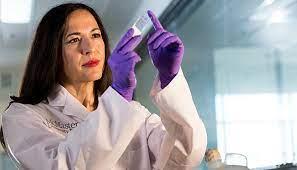There is a lot of fuss and bother about biomarkers these days. But what exactly are they? And moreover, how do we validate them? To answer these questions and more, we need to go back to the basics.
What Are Biomarkers?
Biomarkers are essentially biological indicators of the effects, severity, or progress of an underlying medical condition like cancer or diabetes. Validation is used to ensure that a bio-marker is truly indicative of the disease, has been measured accurately and reliably, and can be used for comparison with other measurements.
Validation is vital because biomarker analysis may vary over time, for example, due to medication changes or other parameters. Validating a biomarker is hard work, not only because the multiple tests required (compared to statistical considerations) are computationally intensive but also because bio-markers can be very expensive to measure.
Many bioscience companies that wish to move their products forward toward clinical trials need to validate their bio-markers. They want an assay that can accurately and reliably measure the level of a specific protein in blood samples taken from healthy patients and patients with the disease. The process of validating an assay is crucial if it's going to be used for clinical trials or regulatory submissions.
How To Develop A Valid Assay For Biomarker Validation?
A valid biomarker assay would need to be developed at home or in the lab under very strict conditions. Different conditions are required to validate the protein in humans compared to in an in vitro test system.
A normal human patient trial requires blood samples to be collected for analysis, whereas running the test on cells grown in vitro would require different methods if tissue culture is used rather than blood sampling. The tests must be done over multiple time points at varying levels of confidence within studies so that the teams can determine how stable their test markers are.
Preparation of blood samples may involve varying degrees of effort depending on the requirements for each biomarker. This may include the use of specialized kits to prepare samples for different purposes. Some tests, referred to as biomarker assays, are simple enough to be done at home or in the clinic by non-scientists.
Integrating Biomarkers into Drug Development
Others are more complex, however, and require experts to collect, prepare and analyze blood samples. The next step involves the actual testing itself. This is where it gets even more complicated. The bio-marker must be measured accurately and reliably using an appropriate test system or assay that gives reproducible results. Test kits should differentiate between different levels of the biomarker study being tested within a range of accurate measurements. The test should be repeatable from sample to sample, given the difficulty of accurate sample preparation and analysis.
In vitro assays have been developed to validate a plethora of biomarkers. These assays involve the growth or proliferation of a cell line that produces a specific protein, for example. Subsequently, the proteins can be measured using an ELISA ("enzyme-linked immunosorbent assay"), a direct immunoassay, a radioimmunoassay, or another biomarker assay. In vitro growth can also give rise to other types of measurement, such as the production of secondary metabolites such as alkaloids from plant growth hormones.
Conclusion
The need and the standardization process for the validation of biomarkers are becoming extremely important. Further enhancement and advancement in this sector will help its clinical application being incorporated into drug development lifecycle.
